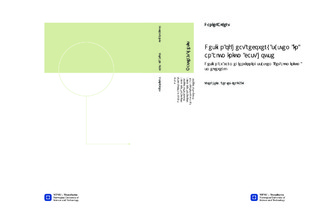| dc.contributor.advisor | Eikevik, Trygve Magne | nb_NO |
| dc.contributor.author | Albert, Daniel | nb_NO |
| dc.date.accessioned | 2014-12-19T11:49:38Z | |
| dc.date.available | 2014-12-19T11:49:38Z | |
| dc.date.created | 2012-11-08 | nb_NO |
| dc.date.issued | 2012 | nb_NO |
| dc.identifier | 566564 | nb_NO |
| dc.identifier | ntnudaim:8459 | nb_NO |
| dc.identifier.uri | http://hdl.handle.net/11250/234902 | |
| dc.description.abstract | In this diploma thesis, the possibilities to enhance the process production and energy efficiencyas well as the energy recovery potential of PFA 2 at Hydro-Sunndalsøra have been determined.To identify the potentials for energy recovery, it has been conducted energy balances. The resultsfrom the balances give an overview of the waste heat sources and their total energy content, togetherwith the temperatures at which they are available. The total energy in the waste heatsources for PFA 2 was found to be 17.8 GWh/year. The largest waste heat sources were localisedin connection to the cooling agent of the casting ingot machine. Here disappears 12.32GWh/year through cooling water within a temperature range of 10 to 30°C as well as convectionand radiation to surrounding. The cooling water section one was determined as the most promisingheat recovery potential with 7.47 GWh/year. Furthermore the initialisation of liquid aluminiumalloy was revealed as a waste heat source with 5.48 GWh/year. Here disappears 3.34GWh/year through the flue gas of the furnace within a temperature range of 288 to 1,100°C andcreates the most promising heat recovery potential at the furnace.The energy saving potential is divided into three groups: energy saving by existing equipment,optimising of equipment and waste heat recovery. Here energy saving by existing equipmentreveals 26.4 MWh/year for an improved control quality of the melt temperature. The greatestpotential for energy saving by optimisation of the equipment was found to be 1.98 GWh/year forthe implementation of regenerative burner. Furthermore effects an installation of a furnace pressurecontrol system 689.14 MWh/year less energy consumption due to the avoided false air. Thegreatest energy saving potential for waste heat recovery was estimated to 1.65 GWh/year for thepreheating of charged metals to 300°C, instead of 20°C. The preheating also leads to improvedsafety, because of the elimination of moist metal in the furnaces, and increases the process production,as a consequence of larger melt capacity. Furthermore, heat to power solutions revealedthe use of favourable electricity production by the generation of waste heat. Here the greatestgeneration potential was found to be in the flue gas from the furnace. A common Rankine cycle,with a direct heat recovery design and water as working fluid, was estimated with a recoverypotential of 1.1 GWh/year. With the use of an organic Rankine cycle the potential can be recoveredto 489.8 MWh/year for an indirect heat recovery design and pentane as working fluid. Thereare still some challenges associated with flue gas heat exchangers (dust) and operation of suchpower generation plants at alternating heat loads, but the technology is under rapid development.The waste heat generation potential for the casting ingot machine was determined with 411.3MWh/year for an ideal organic Rankine cycle heat recovery design, within a temperature rangeof 58 to 90°C and R 134a as working fluid. An alternative ideal organic flash cycle layout revealed253.4 MWh/year (expander = 0.6) respectively 416.5 MWh/year (expander = 0.6), within atemperature range of 36 to 90°C and butane as working fluid. These considerations have lowerefficiencies compared to the furnace layouts caused by the low application temperatures (TBoiler <90°C). | nb_NO |
| dc.language | eng | nb_NO |
| dc.publisher | Institutt for energi- og prosessteknikk | nb_NO |
| dc.subject | ntnudaim:8459 | no_NO |
| dc.subject | MTING ingeniørvitenskap og IKT | no_NO |
| dc.subject | Energi- og prosessteknikk | no_NO |
| dc.title | Design of heat recovery system in an aluminium cast house: Design av varmegjenvinningssystem i et aluminium smelteverk | nb_NO |
| dc.type | Master thesis | nb_NO |
| dc.source.pagenumber | 85 | nb_NO |
| dc.contributor.department | Norges teknisk-naturvitenskapelige universitet, Fakultet for ingeniørvitenskap og teknologi, Institutt for energi- og prosessteknikk | nb_NO |

